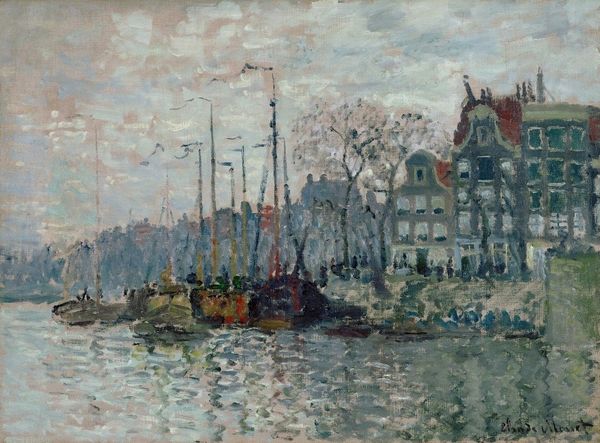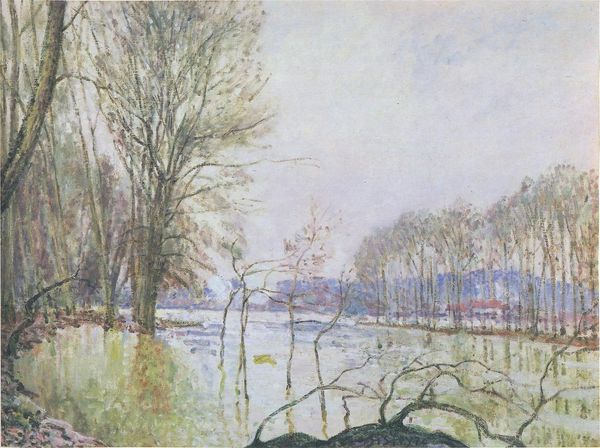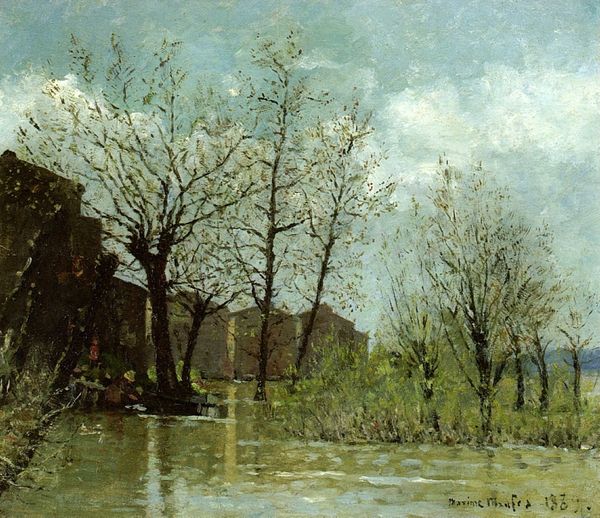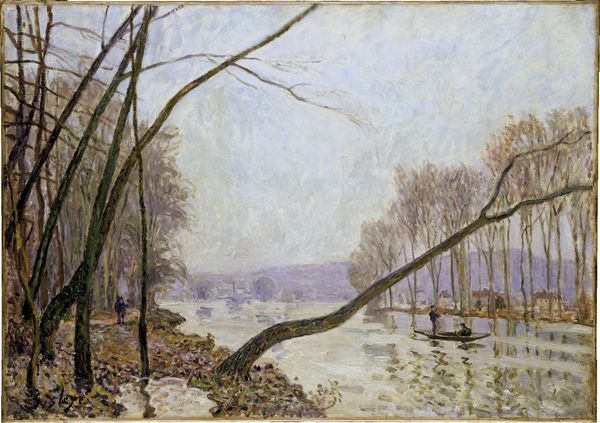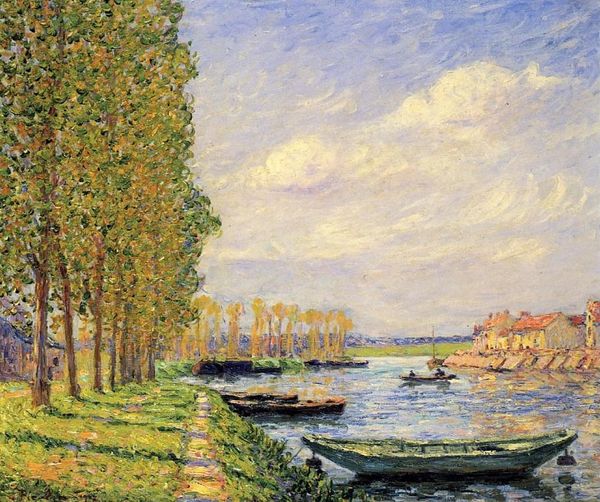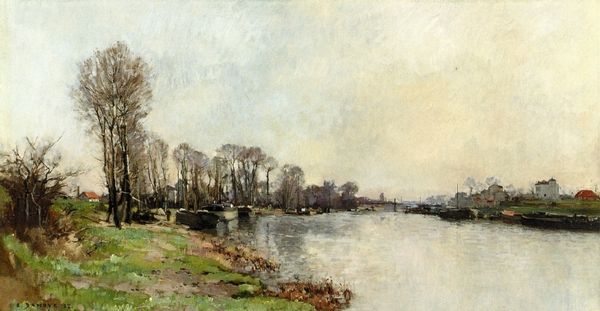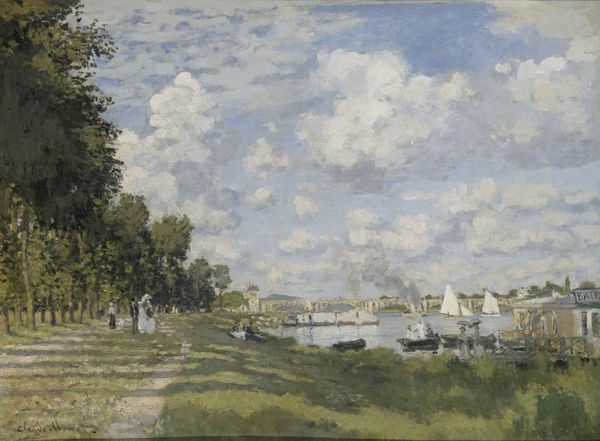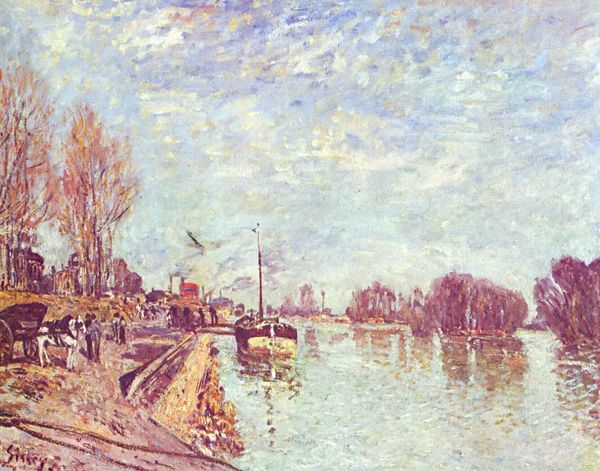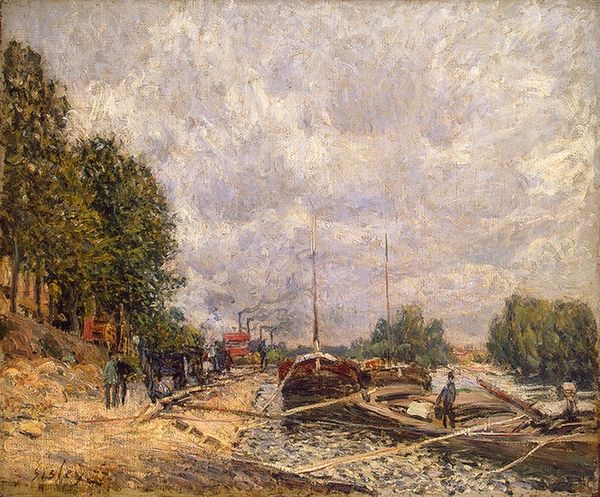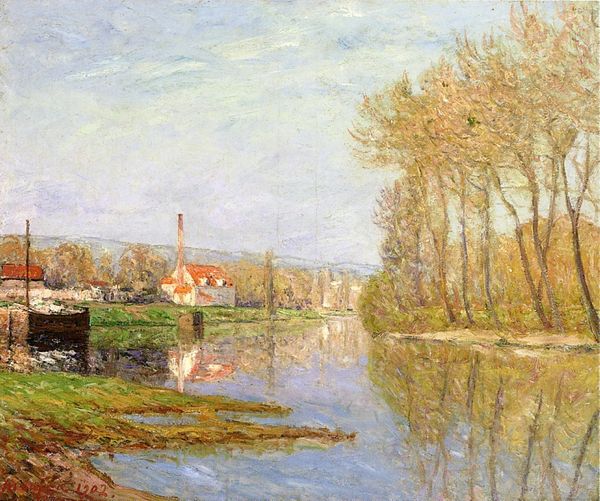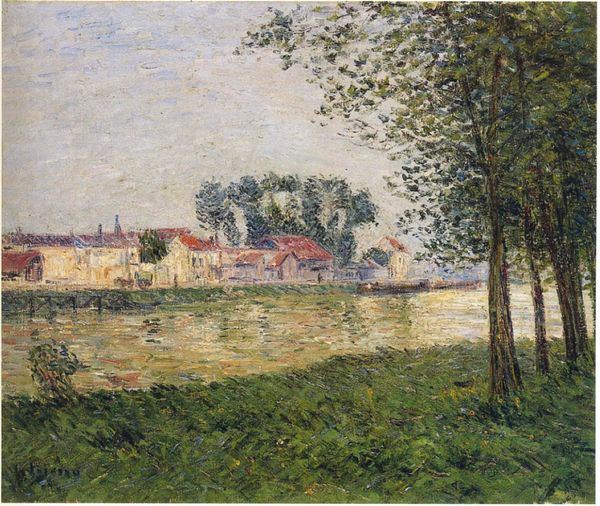
Copyright: Public Domain: Artvee
Curator: Let’s turn our attention to Alfred Sisley’s 1876 painting, "The Flood on the Road to Saint-Germain," an oil on canvas work emblematic of the Impressionist movement. Editor: Mmm, immediate mood: melancholic. It's washed in gray, muted light... makes you wonder what's lurking beneath that water, doesn't it? Are we seeing a disruption of the everyday or a terrifying submersion? Curator: Well, such flooding events were common occurrences during this period, shaped by unregulated industrialization and land use. Sisley captured a recurring consequence of social and economic development. These Impressionists were depicting a rapidly changing world and landscape altered by climate, urbanization, social change, and technological advancement. Editor: Right, those straight rows of bare trees along the submerged road do create a strong sense of imposed order contrasted with the chaos of nature. Makes you wonder how people tried to tame water itself, mirroring their own human need for some semblance of control. Also, isn’t there something about the bare trees hinting at the stark realities that the coming seasons might have? Curator: Absolutely. The flooding disproportionately affected working-class communities residing near waterways and Sisley often highlighted landscapes and cityscapes from the Parisian suburbs that captured those consequences of rapid social change. His focus on this geographical intersection reveals his empathy with how those communities coped with such hardships. It makes me reflect upon what this moment and others, similarly, tells us about the intersection of poverty and natural disasters. Editor: You can almost feel the dampness in the air. Makes you want to crank up the heat and grab a cup of tea! Still, there's beauty in the reflection of the sky on the water. I love how those clouds become both above and below! Maybe nature isn’t something to conquer, it’s something to… co-create with, artistically, like Sisley does here with his reflection. It does hint to me how fleeting our individual struggles and solutions might be compared to longer cycles of nature and life itself. Curator: Well put. And to look at it through the perspective of history, this scene reflects anxieties tied to urban planning, infrastructure, and wealth inequality in 19th-century Paris. Editor: Ah, a world underwater... perhaps mirroring all that was submerged under the veneer of La Belle Époque! It is truly powerful what that can bring about for us and to the forefront of modern dialogue as well.
Comments
No comments
Be the first to comment and join the conversation on the ultimate creative platform.
